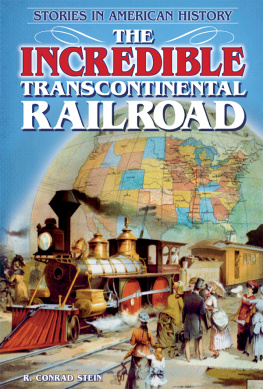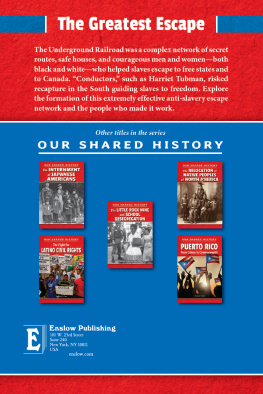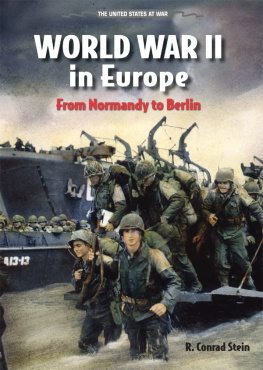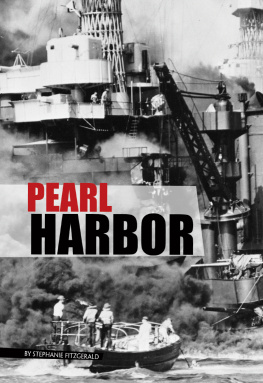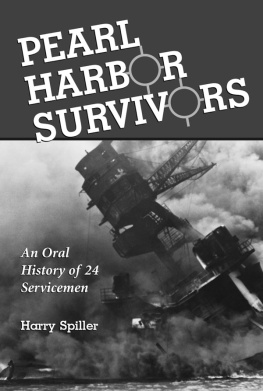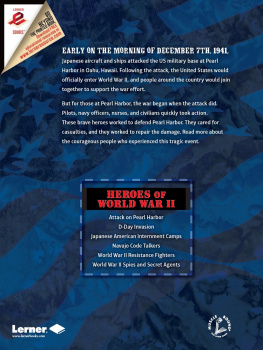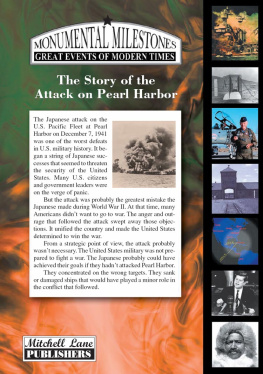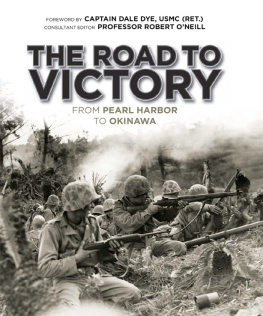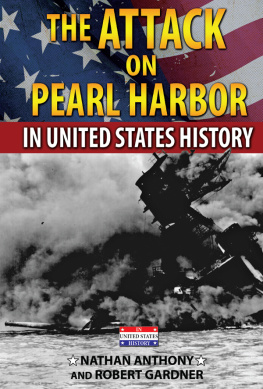REMEMBER PEARL HARBOR!
When the Japanese attacked Pearl Harbor on December 7, 1941, the United States was thrust into World War II. The war with Japan would last four grueling years. Bold leaders, such as President Franklin Roosevelt and General Douglas MacArthur would lead the United States to victory. Author R. Conrad Stein explores the historic carrier-based naval battles, the island hopping campaigns, the home front, and the beginning of the atomic age.
About the Author
R. Conrad Stein is the author of more than one hundred books for young readers, including Escaping Slavery on the Underground Railroad and Cuban Missile Crisis: In the Shadow of Nuclear War for Enslow Publishers, Inc.

Image Credit: U.S. Navy
I spent the summer of 1945 at a YMCA boys camp somewhere in Wisconsin. I was only eight years old and homesick during most of my stay. But I recall having delirious fun on Invasion Day, when we played special war games. Some boys dug foxholes. Others charged at them, just as in a real battle. We used sticks as rifles, and the counselors wore surplus army helmets. It was the height of World War II, and we had grown up watching war movies and reading about heroes in uniform. To us, warfare was an adventure.
I joined the U.S. Marine Corps in 1955 at the age of eighteen. I still believed that war was a thrilling experience, a stage on which young men become heroes. But in the Marine Corps, I met an officer who had been wounded when he was hit by flying bone fragments that came from his best friend, who had been blown to bits by a shell. A grizzled old sergeant wept when he remembered seeing the blackened corpses of two children burned to death by a napalm bomb on Okinawa. Because of my Marine Corps experience, I came to see war as a damnable practice, promoted only by madmen.
Despite my hatred of war, I retain a powerful interest in World War II. Ive read countless books on the subject. Ive studied and secondguessed the strategies employed by generals and admirals on both sides. I am a trivia expert on details concerning World War II planes, ships, and tanks. I say this without apologyAmerican history has always fascinated me. World War II was the biggest event of twentieth-century American life. The war shaped millions of lives, including my own.
1
THIS IS NO DRILL!

U.S. USELESSLY EXTENDING TALKS.
HAS NO INTENTION OF COMPROMISE
WITH JAPAN.
Headlines in the Tokyo newspaper Asahi Shimbun, on December 6, 1941

It was 6:40 A.M. when the helmsman of the destroyer USS Ward spotted a suspicious object in the waters ahead. The warship was patrolling the mouth of Pearl Harbor, Hawaii, Americas largest naval base in the Pacific. Three hours earlier, another American ship had reported seeing the periscope of a submarine. Now, in the early morning sunlight, the Wards captain and all the sailors on deck spotted the conning tower of a half-submerged submarine plowing through the waves. The gunners opened fire, and one scored a direct hit. Although the crew was confused as to the origin and destination of the submarine, they still broke into a cheer. The captain radioed headquarters at Pearl Harbor to report he had sunk an unknown submarine.
It was December 7, 1941. Officers at Pearl Harbor pondered the Wards radio report. Although war raged in Europe and Asia, the United States was at peace. Consequently, American military leaders felt little sense of urgency. The officers decided to wait for further developments. Besides, it was a Sunday morning, and all the top brass were sleeping late. Surely, there was no need to waken generals and admirals.
At 7:00 A.M. , two radar operators near Pearl Harbor saw a strange blip on their screens. Radar sets were new and rather mystifying devices in 1941. The two army privates operating the installation had only a few months experience with radar. One of the men, Private George Elliot, telephoned the Pearl Harbor Information Center.
Sir, theres a huge number of airplanes coming from the north at three degrees east.
Only one officer was working at the Information Center that Sunday morning. He knew that a squadron of American B-17 bombers had taken off from California earlier and was due to land in Hawaii soon. He concluded that the radar operators had sighted the friendly planes.
Bobbing in the waves two hundred miles north of Hawaii was a huge Japanese naval fleet led by six aircraft carriers. Before dawn, a flight of almost one hundred Japanese fighters and bombers roared off six flight decks and headed toward Pearl Harbor. One of the flyers was Lieutenant Yoshio Shiga, the leader of a fighter group. At 7:50 A.M. , he spotted the target. Shiga was astonished. There were no enemy planes in the air. The morning sun revealed a row of battleships below him, all lined up like cars in a parking lot. Shiga banked his plane and dove for the attack. He shouted into his radio the code words that told his superiors the group had achieved complete surprise:
TORA! TORA! TORA!

Image Credit: U.S. Navy
Japanese sailors salute a torpedo plane as it takes off from an aircraft carrier on December 7, 1941. The Japanese air attack surprised the Americans at Pearl Harbor.
Serving aboard the battleship USS Oklahoma at Pearl Harbor was Seaman First Class William Fomby. Working as a cook, Fomby had just finished serving breakfast when he heard the rumbling of airplanes at close range. I remember I dried my hands on my apron and walked out [on deck] to look. He saw what he thought were American planes practicing bombing runs over the battleships. Then, from his left, came an earthshaking explosion. One of the planes had dropped a bomb that had blown up on Ford Island, a speck of land in the middle of the harbor. Still believing the planes were American, Fomby said to the man next to him, Somebodys sure going to catch hell for [accidentally dropping that bomb].
On the fantail of the battleship USS Nevada, a Marine band played the Star-Spangled Banner while a color guard hoisted the American flag. In the middle of the ceremony, the rear gunner of a Japanese aircraft sprayed the ship with machine-gun fire. No one was hit, but bullets ripped into the flag. The highly disciplined Marine Corps band continued to play the national anthem, hardly missing a beat. At the last note, however, everyone scattered for cover.
A wave of Japanese torpedo planes skimmed over the water toward the Oklahoma. At close range, they dropped their torpedoes, which splashed into the water and arrowed toward the mighty battleship. Three of them crashed into the Oklahomas side. There was a tremendous explosion, Seaman Fomby remembered. The ship weighed about 30,000 tons, and when the torpedoes hit they shook everything on her.
The explosions along the line of vessels the sailors called Battleship Row shattered the peaceful Sunday morning. Suddenly, excited voices from ships loudspeakers burst out the electrifying news:


